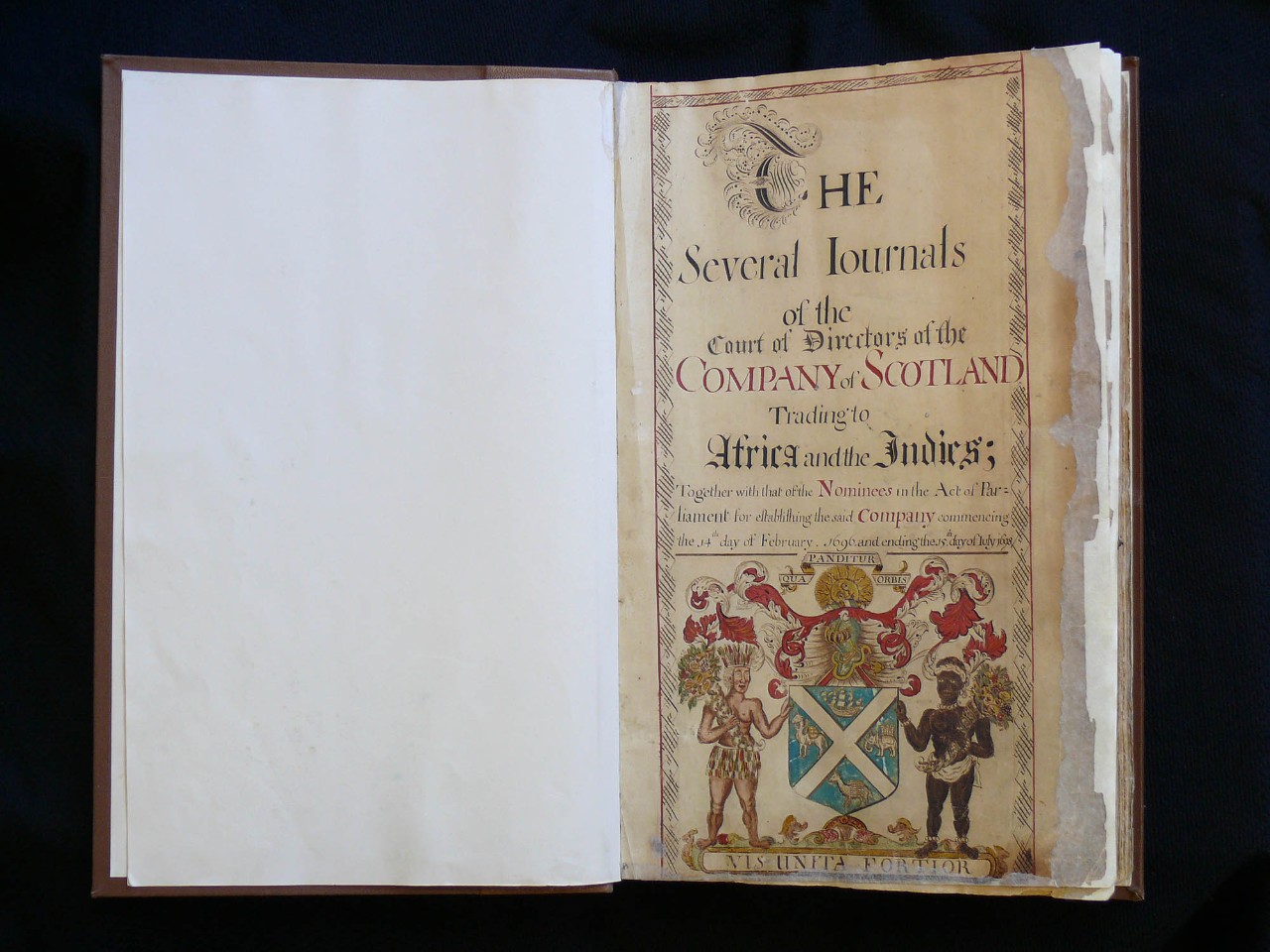Object 51: Coat of arms, 1696

Coat of arms of the Company of Scotland Trading to Africa and the Indies, 1696. © RBS
This is the coat of arms of the Company of Scotland Trading to Africa and the Indies. It is also evidence of a collective dream, born in one of the poorest countries in Europe; a dream of a Scotland enriched by wealth from exotic lands, and of a world bound together by mutually beneficial trade. The Latin motto means 'where the world is opened up its strength, being united, becomes stronger'; if we all work together we can be greater than the sum of our parts.
The dream inspired thousands of Scots to invest in making it a reality. But the Company they built failed. Its colony in Central America collapsed, costing 2,000 lives and a quarter of Scotland's wealth.
| The Darien idea shows how global ambitions were expanding by the 1690s
The Company of Scotland trading to Africa and the Indies was established in 1695 to give Scotland a stake in international trade. Its first big mission was to establish a colony at Darien in Central America - part of modern-day Panama. There, it was hoped that Atlantic and Pacific ships would be able to swap cargoes across the narrow land-divide between oceans. Trade between east and west would become quicker, easier and safer. It wasn't such a bad idea; in many ways, it was a premonition of what would later become the Panama Canal.
Though the Darien idea shows how global ambitions were expanding by the 1690s, it also shows the limitations of the period. European explorers had reported enough about the region to whet the Scots settlers' appetites, but not enough to equip them properly for what lay ahead. They had no idea of the environment or climate they would encounter, and very little understanding of the political influences affecting the region. Once there, they were on their own, more or less out of touch with Scotland. In fact, in 1699 the Company sent a second wave of settlers from Scotland to Darien, not realising that the first settlers had already admitted defeat and abandoned the colony.
Back in Scotland, the failure proved pivotal, hastening the Union between England and Scotland to form Great Britain. The Royal Bank of Scotland's own origins can be traced to the administration of compensation payable under the terms of that Union. For Scotland, meanwhile, Darien may have proved catastrophic, but the people never forgot the dream that had underpinned it; they never stopped looking outwards to the world. Today, people of Scottish ancestry live in almost every part of the globe.










